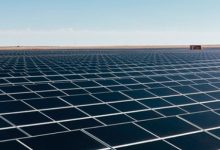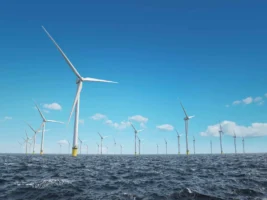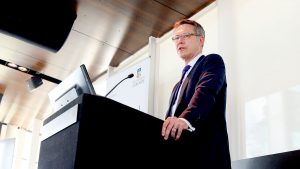Work has stopped on another major solar project affected by the collapse of engineering giant RCR Tomlinson, as it emerged that delays in grid connections and the impact on milestone payments played a major role in the company’s cash flow issues.
RCR – a leading contractor with some $2 billion in annual revenues – was placed in voluntary administration last week after the company failed to attract more finance to get over its short term funding issues, just a few months after it had raised $100 million to overcome a major cost blowout at two Queensland solar farms.
RenewEconomy understands that the cash crisis was largely caused by the failure to obtain milestone payments from project developers, in turn caused by delays to grid connection.
This is a problem that has affected the whole industry in one way or another – although some such as Neoen’s Coleambally solar farm have been able to connect in record time.
The delays have been blamed by new stringent connection requirements from the Australian Energy Market Operator, the lack of resources at some network companies, a lack of resources at key consultancies required to do network modelling, and in some cases a shortfall of knowledge from the developers themselves who did not anticipate problems.
Workers were pulled from five Queensland solar farms last week – Clermont, Emerald, Darling Downs, Collinsville and Haughton – following the collapse of RCR and the appointment of McGrathNicol as administrators.
It now emerges another major RCR project, the 30MW, $60 million expansion of Australia’s first large scale solar farm at Greenough River in Western Australia, has also come to a halt while funding issues are resolved.
Construction of that site only began last month and was due to be complete by the middle of next year.
A spokesman for WA energy minister Ben Wyatt told The West Australian that construction of the Greenough River expansion for the state owned utility Synergy had been suspended “subject to further decisions on the contract or advice from the administrator”.
Solar companies directly and indirectly affected by the collapse of RCR are scrambling to understand the issues. One company, New Energy Solar, which recently purchased Manildra solar farm was built by RCR, said it was seeking to understand the implications for “a small number of items” yet to be completed.
McGrathNicol will hold meetings with creditors next Monday to provide an update on the situation. On Monday, it provided a timeline of events and meetings with RCR management over the weeks leading up to the collapse, including the initial suspension of shares.
RCR announced in August a $57 million cost overrun from the $315 million contract to build the Daydream and Hayman solar farms in Queensland, which forced it to go to the market to raise another $100 million to address depleted cash resources.
The role of the solar contracts – which in aggregate likely total more than $1 billion – was downplayed at the time of the second suspension in the middle of November. But it now turns out the issue was not so much cost overruns as the connection delays which have been widespread through the industry.
This triggered the delay in the milestone payments, and RCR’s cash position was so tight – despite its billions of civil engineering contracts at mines, railways and other construction projects – that it was unable to continue.
The timeline provided by McGrathNicol provides one reference – from a meeting with management on November 5 – to a discussion of “key solar and rail projects and impact on cashflow forecast.” The company announced the resignation of its chief financial office two days later and called a trading halt a week later. Ten days later it was in administration.
The connection issues are not just impacting solar farms, with both wind and solar developers warning of grid constraint issues in Victoria, which forced Total Eren to turn to expensive synchronous condensers to ensure that its Kiamal solar project could go ahead.
In north Queensland, uncertainty about grid connections caused a major equity partner in the planned 106MW Lakeland wind farm to drop out. Developer Windlab said UK investor InfraRed had quit, citing the “inability to price risks associated with the grid connection” including risk of network losses and curtailment.
Windlab, which is also building the world-first wind-solar-battery project at Kennedy, says it is looking for alternative investors but says financial close will be delayed until early 2019.
Infigen Energy also reported last week that its Cherry Creek wind farm and many other projects had been delayed by new connection standards, the requirement for multiple appraisals, and the lack of expertise at consulting firms to help companies through the process.
French-based renewable energy developer Neoen reported in September that it had made a $22 million claim against the builder of three smaller solar farms in NSW over construction and connection delays.










